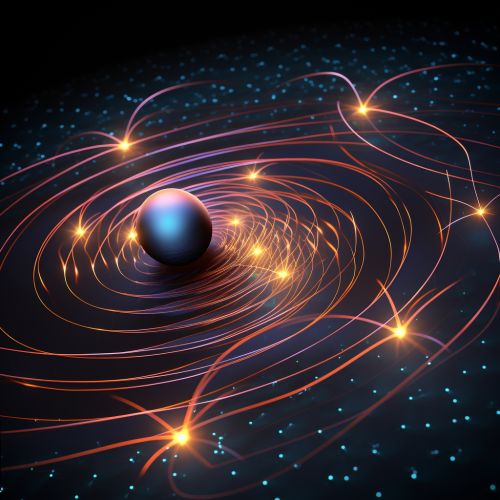Fractional Quantum Hall Effect
Introduction
The Fractional Quantum Hall Effect (FQHE) is a physical phenomenon that occurs in two-dimensional electron systems subjected to low temperatures and strong magnetic fields. This effect is a quantum mechanical version of the classical Hall effect, and it is characterized by the quantization of the Hall conductance in fractions of the elementary charge.
Theoretical Background
The FQHE is a complex quantum mechanical phenomenon that requires a deep understanding of quantum mechanics, quantum field theory, and statistical mechanics. The effect is observed in two-dimensional electron systems, which are systems where the motion of electrons is restricted to two spatial dimensions. These systems can be realized in semiconductor heterostructures, where a thin layer of one type of semiconductor is sandwiched between layers of another type.


In these systems, when a strong magnetic field is applied perpendicular to the plane of the electron system, the electrons move in circular orbits. These orbits are quantized, meaning that the electrons can only occupy certain discrete energy levels, known as Landau levels. The energy of these levels is proportional to the magnetic field strength and the electron's charge.
The FQHE is observed when the filling factor, which is the ratio of the number of electrons to the number of available states in a Landau level, is a fraction. This is in contrast to the integer quantum Hall effect, which is observed when the filling factor is an integer.
Experimental Observations
The FQHE was first observed by Daniel C. Tsui and Horst L. Störmer in 1982, for which they were awarded the Nobel Prize in Physics in 1998. They observed that the Hall conductance, which is the ratio of the current flowing through the system to the voltage across the system, was quantized in fractions of the elementary charge.
This observation was unexpected, as the Hall conductance was previously thought to be quantized in integers, as predicted by the integer quantum Hall effect. The discovery of the FQHE provided the first experimental evidence of the existence of anyons, particles that are neither fermions nor bosons, but have fractional statistics.
Theoretical Explanation
The theoretical explanation of the FQHE involves the concept of composite fermions, which are bound states of electrons and magnetic flux quanta. These composite fermions behave as if they are subjected to a reduced magnetic field, and they form Landau levels of their own. The FQHE is then explained as the integer quantum Hall effect of these composite fermions.
This theory was first proposed by Jainendra K. Jain in 1989, and it has been successful in explaining the observed fractions in the FQHE. However, the theory is still not fully understood, and it is the subject of ongoing research.
Applications
The FQHE has potential applications in quantum computing, as the anyons that arise in the FQHE can be used to perform quantum computations. These computations are inherently resistant to errors, making them ideal for quantum computing.
See Also
- Quantum Hall Effect
- Quantum Field Theory
- Statistical Mechanics
- Composite Fermions
- Quantum Computation
